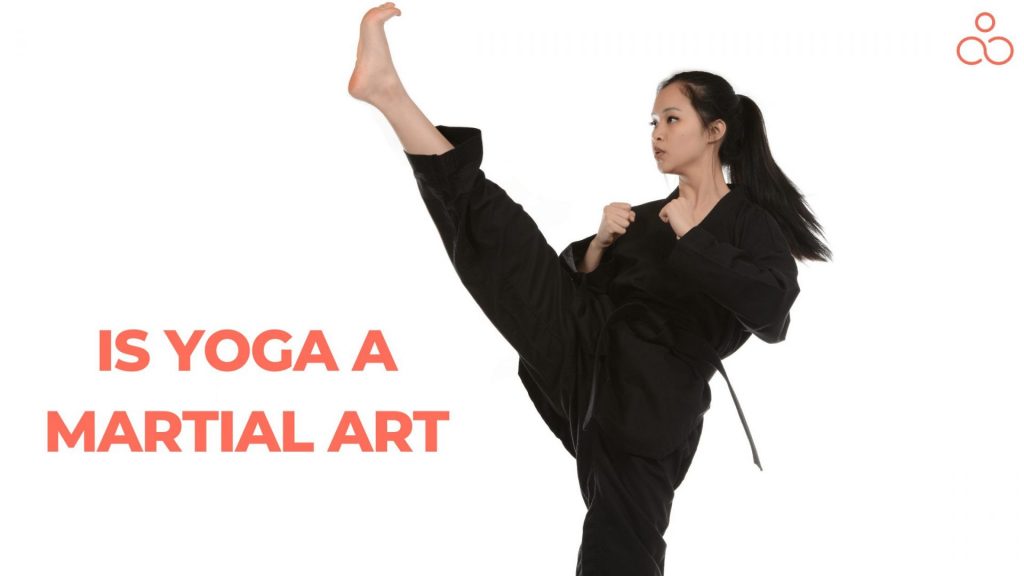In the diverse world of physical practices, have you ever paused to ask the question “Is yoga a martial art” or if they share a unique connection? Join us in unravelling this fascinating question as we explore the intriguing relationship between these two disciplines and uncover their secrets. Whether you’re a seasoned yogi, a martial arts enthusiast, or intrigued, this eye-opening blog post is for you!
What is Yoga?
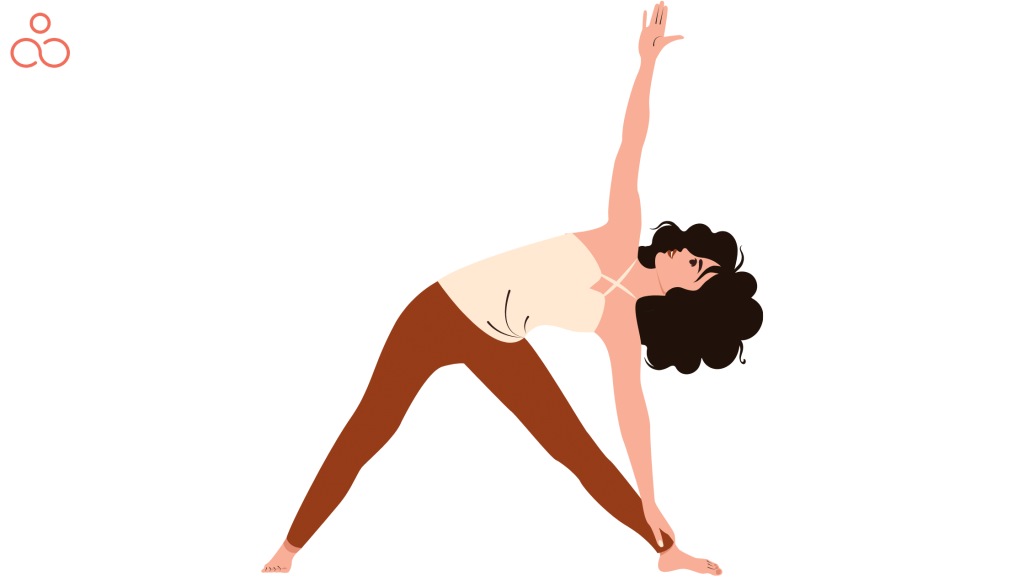
Yoga originated in ancient India as a physical, mental, and spiritual practice. It generally involves a combination of postures, breathing techniques, meditation, and ethical principles aimed at promoting overall well-being, inner peace, and self-realisation. Yoga has gained widespread popularity worldwide for its ability to help practitioners achieve a balanced life, improved flexibility, and reduce stress.
For whom Yoga is suitable?
Yoga is suitable for anyone who is looking to improve their flexibility, strength, and balance. It is also a great way to reduce stress and improve overall well-being. However, it is essential to note that Yoga is not suitable for everyone. For example, suppose you are pregnant or have any medical conditions. In that case, it is best to consult a doctor before starting Yoga.
What is a martial art?
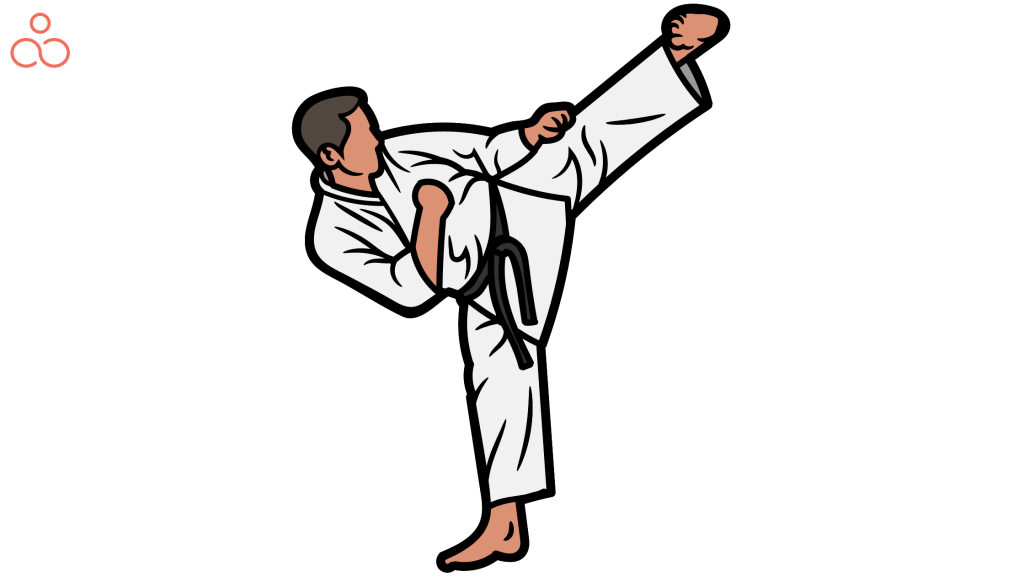
Martial art is a practice, system, or tradition of combat and self-defence that often includes physical and mental training. It combines techniques, tactics, and philosophies from various cultures and regions in order to teach self-defence, promote physical fitness, and cultivate psychological resilience and discipline.
For whom martial art is suitable?
Practising martial arts can be beneficial for people of all ages, as it helps improve physical fitness, mental focus, and self-defence skills. Young children can benefit from the discipline and structure of martial arts training. At the same time, adults can enjoy the stress relief and physical benefits of regular practice. Senior citizens can also benefit from the low-impact nature of martial arts, as it can help improve balance and mobility. Overall, martial arts is an excellent way for people of all ages to stay active and learn self-defence skills.
Is Yoga a martial art?
Yoga is not a martial art. While Yoga and martial arts focus on physical fitness, mental discipline, and movement, their goals and techniques differ. Yoga is primarily a practice for physical, mental, and spiritual well-being. At the same time, martial arts are self-defence, combat, and competition systems. Comparing the two disciplines, it becomes evident that both yoga and martial arts prioritise physical and mental development. Although they both emphasise the importance of breath control, mental focus, and discipline, the primary difference lies in their objectives – while Yoga aims for personal growth, inner peace, and health, martial arts focus on self-defence and combat.
What is Budokon?
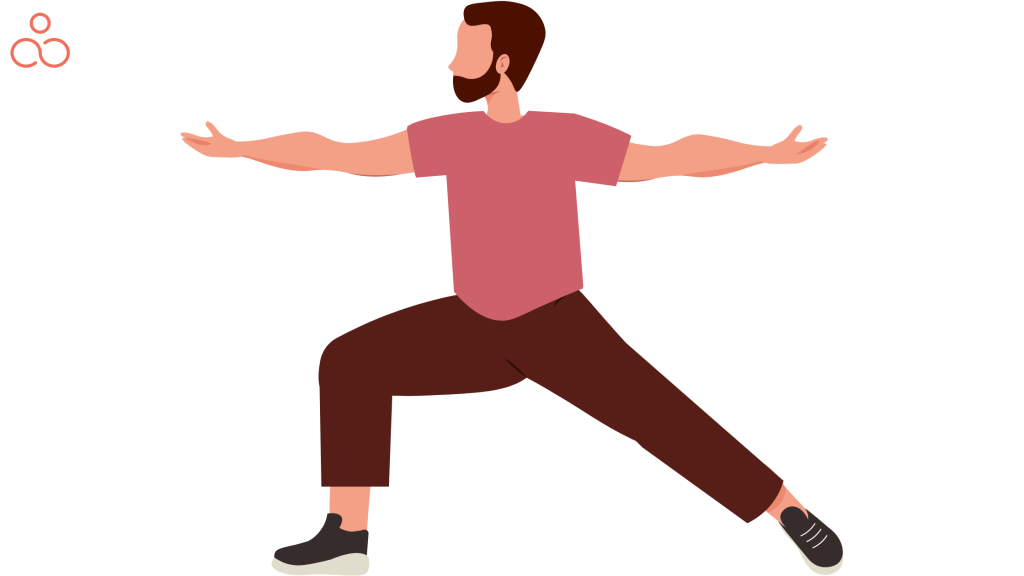
Budokon is a Japanese martial art and way of life that translates as “the way of the warrior spirit.” It was founded by Cameron Shayne in the early 20th century and is based on the principles of jiu jitsu. This Japanese martial art focuses on using an opponent’s energy against them. Budokon includes striking, grappling, weapons training, and a strong focus on meditation and philosophy. It is a way of life that requires the development of the mind, body, and spirit in a harmonious and balanced way, and it has been practised by millions of people worldwide for over a century.
How is budokon simultaneously related to Yoga and martial art?
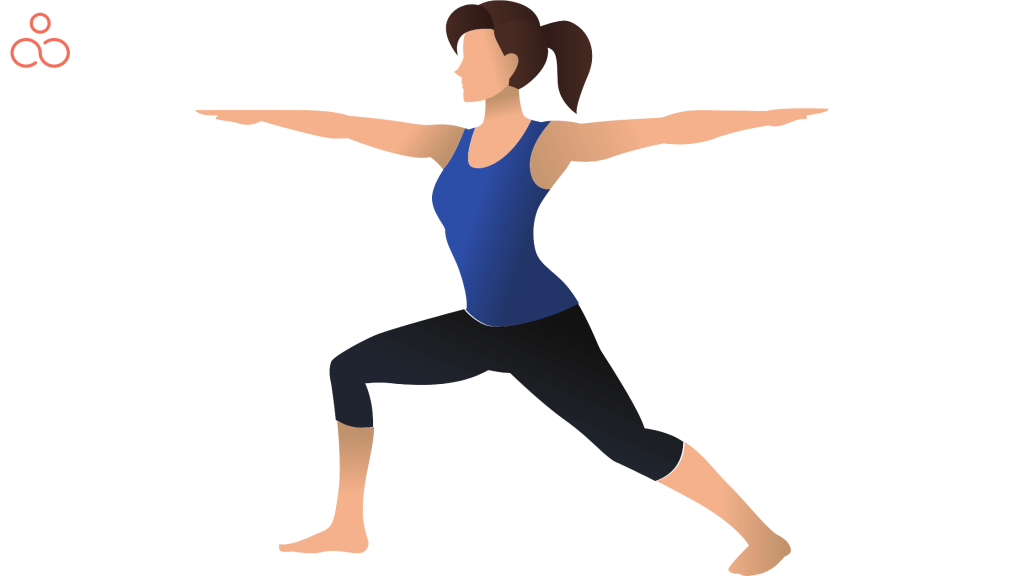
Although martial arts and yoga are not identical, they bear numerous similarities. Budokon is a contemporary movement practice that combines the techniques, principles, and philosophies of both disciplines, making it related to both martial arts and yoga. Its focus is on fluid movements, drawing strength, flexibility, and balance from yoga while incorporating the power, agility, and discipline of martial arts. This amalgamation results in a holistic physical and mental well-being approach that enhances self-awareness, mindfulness, and overall body conditioning. Budokon combines traditional self-reflection with contemporary movement and modern concepts of ethics and spirituality. It is built upon the common foundations of both yoga and martial arts, producing a harmonious balance of their principles. Research has also been done concerning the effectiveness of martial arts and yogic practice on the attention of the students that says it can boost memory and act as an instant cognitive boost. Both these practices have been influencing and supporting each other for centuries and remain deeply intertwined. As a result, martial arts training can provide yoga’s benefits, such as increased mental clarity and inner calm, while also respecting and acknowledging yoga’s ethical codes.
Which style of Yoga is good for martial arts?
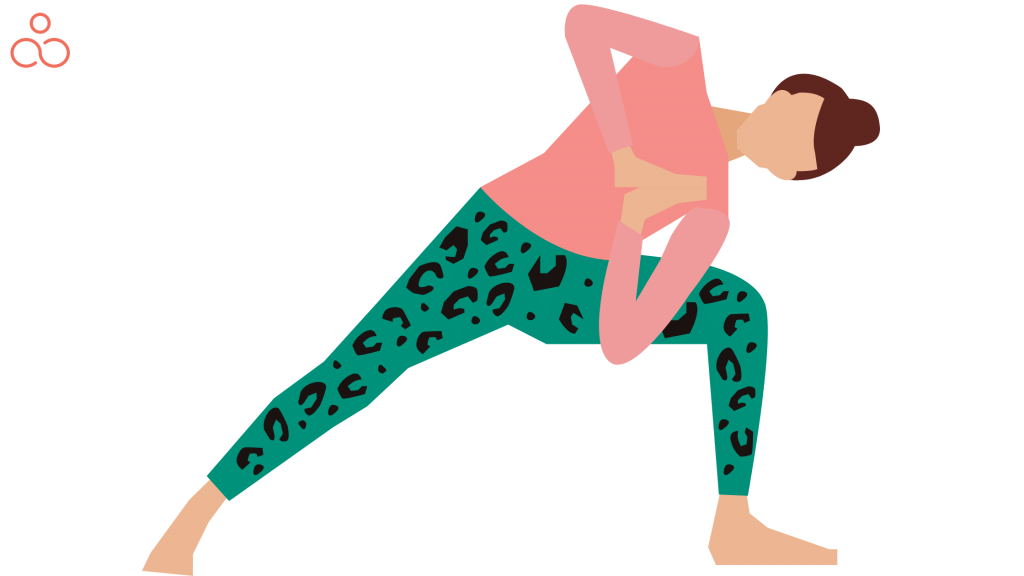
Several styles of Yoga can benefit martial artists as they focus on improving flexibility, balance, strength, and mental focus. Some of these styles include:
Hatha Yoga
This is a slow-paced and gentle style of Yoga that emphasises alignment, breath control, and mindfulness. It’s a great starting point for martial artists new to Yoga as it helps build a strong foundation, increase flexibility, and develop concentration.
Ashtanga Yoga
This is a more vigorous and dynamic style of Yoga that involves a specific sequence of postures synchronised with the breath. It helps martial artists to build strength, improve flexibility, increase endurance, and sharpen mental focus.
Iyengar Yoga
This is a precise and methodical style of Yoga that focuses on proper alignment and the use of props like blocks, straps, and bolsters. This style is particularly beneficial for martial artists as it aids in injury prevention and recovery and improves stability and balance.
Power Yoga
This is an intense and athletic style of Yoga that involves a fast-paced flow of poses. It’s excellent for martial artists who want to build strength, increase flexibility and stamina, and improve their mental focus.
Kundalini Yoga
This style of Yoga combines physical exercises, breathing techniques, and meditation to unlock and harness the body’s energy. It’s beneficial for martial artists as it improves mental clarity, develops intuition, and increases physical vitality.
Yin Yoga
This slower-paced, meditative style focuses on deep stretching and holding poses for more extended periods. This can help martial artists increase their flexibility and range of motion while also cultivating a calm and focused mind.
14 Ways to skillfully combine Yoga and martial art?
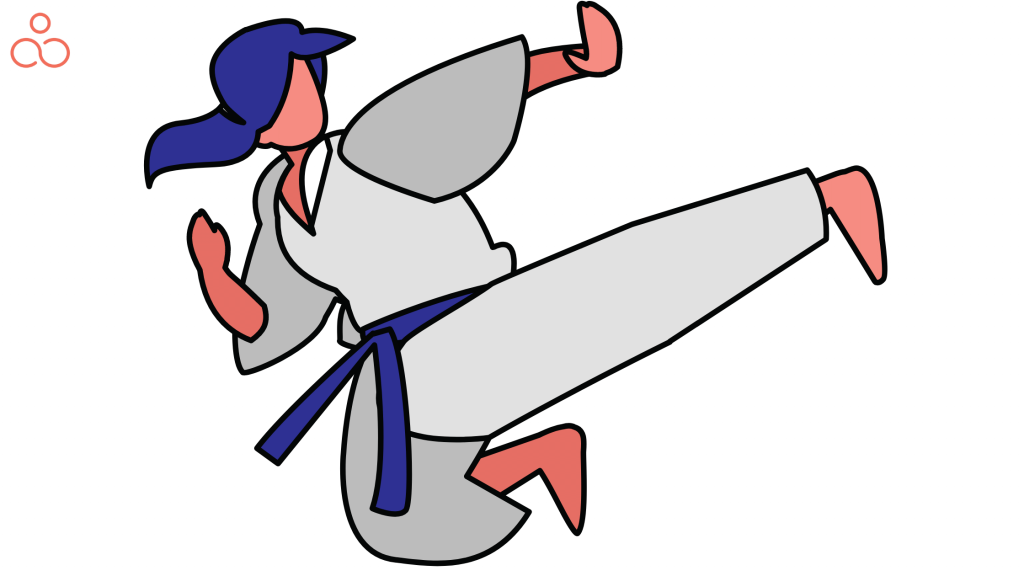
To skillfully combine Yoga and martial arts, follow these steps:
- Research and study both disciplines
Understand the principles of Yoga and the martial art of your choice, including their physical and mental aspects. Familiarise yourself with the techniques, movements, and philosophies of each practice.
- Identify complementary disciplines
Create a balanced workout routine that includes both Yoga and martial arts practice. You can alternate between the disciplines during the week or integrate them within each session. Make sure to include adequate rest and recovery periods.
- Warm-up and cool down
Perform yoga poses and stretches as a warm-up before martial arts training to improve flexibility and prevent injury. After martial arts sessions, use Yoga to relax your muscles and cool down.
- Combine techniques
Integrate yoga poses and martial arts techniques, focusing on breath control, flexibility, and balance. For example, the transition from a yoga pose like Downward Facing Dog into a martial arts stance like the Horse Stance.
- Focus on mindfulness
Being present and mindful is essential in both Yoga and martial arts. Improve your focus and concentration by incorporating meditation and deep breathing exercises into your practice.
- Strengthen your core
A strong body is crucial for both yoga and martial arts. Work on core-specific exercises like planks, boat poses, and leg lifts to enhance your stability and posture.
- Cross-train
Regularly switch between practising martial arts and Yoga to experience the benefits of both disciplines. Cross-training will help you prevent injuries, improve your overall fitness, and increase your body awareness.
- Attend workshops and classes
Attend workshops or classes that combine Yoga and martial arts. Learning from experienced instructors will help you to integrate both disciplines effectively and safely.
- Practise regularly
Consistency is critical to mastering any technique. Develop a routine and stick to it, gradually increasing the intensity and duration of your practice sessions. Choose a martial art that complements Yoga, such as Tai Chi, Kung Fu, or Brazilian Jiu-Jitsu. These martial arts incorporate fluid movements, balance, and flexibility, which align well with yoga practice.
- Utilise breath work
Both yoga and martial arts emphasise the importance of proper breathing. Integrate breathwork into your practice by synchronising your breath with your moves and focusing on deep, controlled breathing during rest periods.
- Meditate and practice mindfulness
Develop mental focus and presence by incorporating meditation and mindfulness practices into your routine. Clear your mind before and after training sessions, and strive to maintain a sense of inner calm during physical exercise.
- Find a mentor or teacher
Seek guidance from experienced practitioners who have successfully integrated Yoga and martial arts into their lives. They canTo skillfully combine Yoga and martial arts, follow these steps:
- Monitor your progress
Track your Yoga and martial arts improvement. Regularly assess your strength, flexibility, balance, and overall performance to ensure you advance in both disciplines.
- Listen to your body
Always pay attention to how your body feels during the combined practice, and make necessary adjustments to prevent injury and overexertion.
Similarities between Yoga and martial art
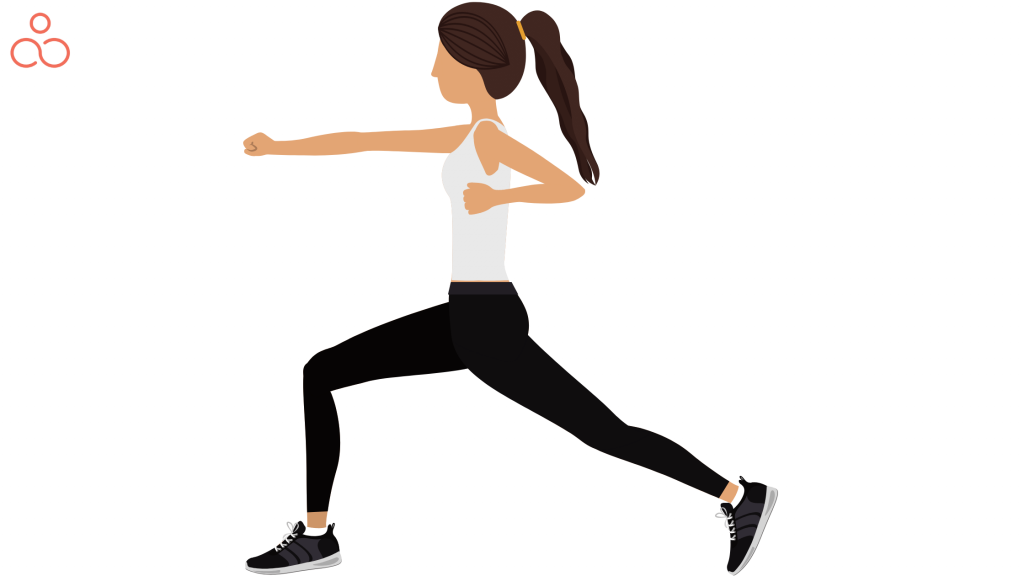
Focus on Mind-body Connection
Both yoga and martial arts emphasise the connection between the mind and body, resulting in improved mental focus, physical balance, and overall well-being.
Emphasis on Breathing
Both practices pay great attention to proper breathing techniques, which aid in relaxation and stress reduction, and foster efficient movement.
Discipline and Self-Control
Yoga and martial arts require consistent practice, dedication, and self-control to achieve progress and mastery, fostering self-discipline in practitioners. To improve your skills or progress in either practice, you must commit your time and effort. Ultimately, you are the only one responsible for your progress.
Flexibility and Balance
Both disciplines involve a range of movements that improve flexibility and balance, strengthening core muscles and enhancing body awareness.
Holistic Approach
Both Yoga and martial arts take a holistic approach to well-being, addressing physical, mental, and spiritual aspects through their practice.
Meditation and Mindfulness
Both practices incorporate meditation and mindfulness elements to enhance mental clarity, focus, and inner peace. Sometimes, these techniques are spiritually intertwined and are even practised by monks.
Technique and Skill Development
Yoga and martial arts both involve a structured learning process, with practitioners gradually advancing through different levels and techniques as they develop their skills.
Cultural and Historical Roots
Both disciplines have deep cultural and historical roots, originating from ancient practices and philosophies in Asia, which have shaped their respective forms and techniques.
Self-defence
Although differing in methods and philosophies, both Yoga and martial arts can be applied as self-defence techniques, utilising body mechanics and awareness to protect oneself.
Movement
Movement takes the spotlight in both yoga and martial arts. In yoga, it’s usually explored through asana practice, which involves postures and a thorough understanding of how these movements link together. Similarly, certain types of martial arts, such as tai chi and qigong, use fluid movements similar to those in yoga.
Differences between Yoga and martial art
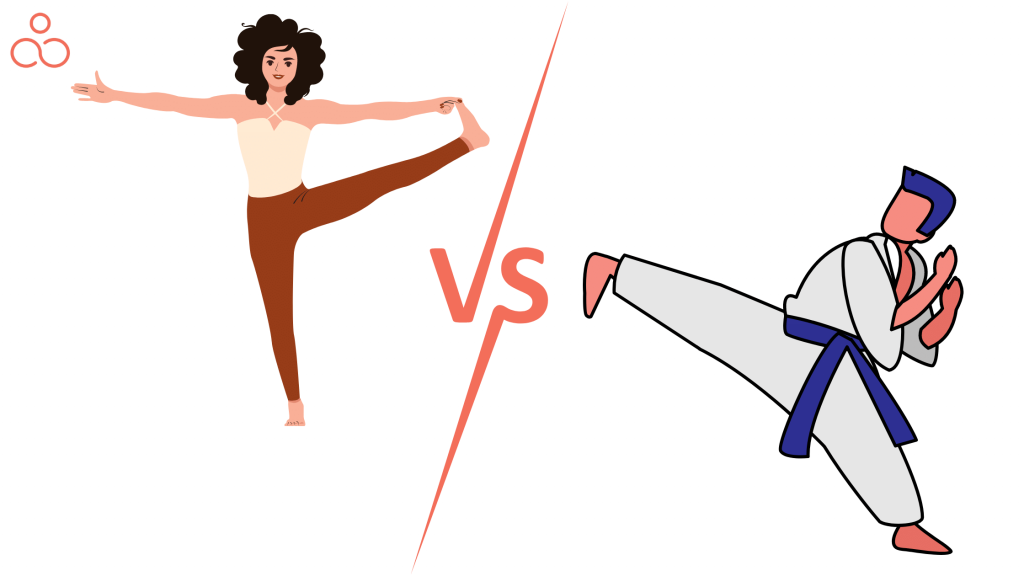
| Category | Yoga | Martial art |
| Purpose | Yoga focuses on achieving harmony and balance in the mind and body. Yoga emphasises the concept of ahimsa, which is non-violence in the way one acts, speaks, and thinks. | Martial arts emphasise self-defence and combat skills.Hence, self-defence through physical force is at the core of martial arts. |
| Movement | Yoga involves static poses and slow, fluid movements | Martial arts incorporate dynamic and explosive movements. |
| Focus | Yoga is primarily about self-growth. | Martial arts is more focused on competition. |
| Flexibility | Yoga emphasises flexibility and balance to improve overall body control | Martial arts prioritise speed, power, and agility. |
| Mindfulness | Yoga promotes mindfulness, meditation, and deep breathing exercises. | Martial arts focus on discipline, concentration, and awareness of surroundings. |
| Teaching approach | Yoga classes are generally non-competitive and supportive | Martial arts classes are typically more hierarchical and competitive. |
| Intensity | Yoga practices can vary in intensity, but are generally more relaxing and calming. | Martial arts are more physically demanding and intense. |
| Combat application | Yoga does not involve any combat or sparring elements | Martial arts include various forms of self-defence and competitive sparring. |
| Origin | Yoga has its roots in ancient India | Martial arts have diverse global origins, such as kung fu from China, karate from Japan, and taekwondo from Korea. |
| Equipment | Yoga usually requires a yoga mat and comfortable clothing | Martial arts often involve training with specialised equipment, protective gear, and uniforms. |
How is Yoga beneficial for martial arts?
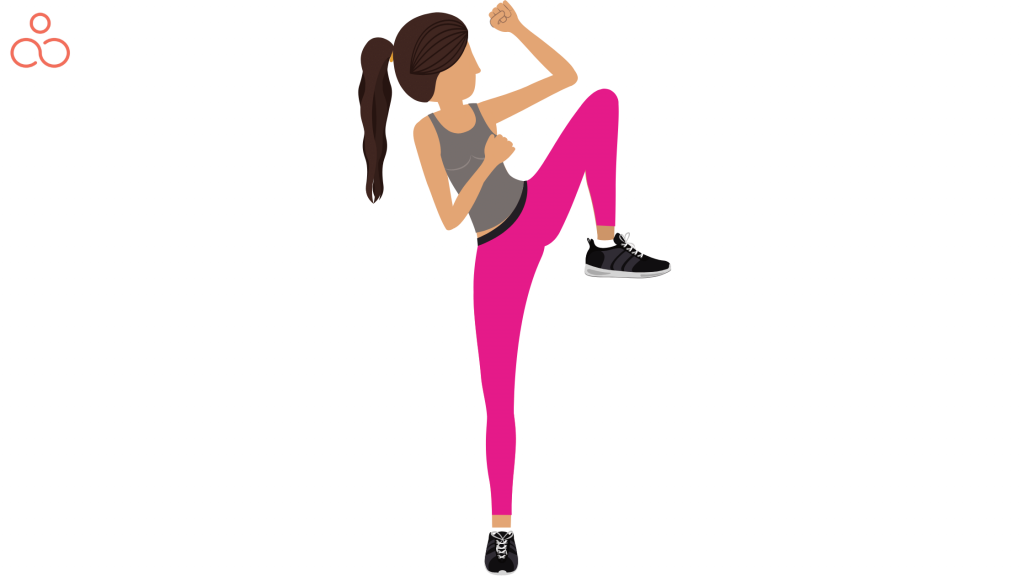
Yoga is beneficial for martial arts in several ways:
Improved flexibility
Incorporating yoga into martial arts training can be hugely beneficial. Regular practice can help improve flexibility and muscle strength, making punching techniques and high kicks more effective.
Enhanced balance and stability
Yoga involves exercises that focus on balancing postures, which can improve balance, coordination, and strength in martial artists, leading to better stances and overall technique.
Increased strength
Many Yoga poses engage various muscle groups, leading to increased overall body strength. This strength can translate into more powerful strikes and groundwork in martial arts.
Better endurance
Yoga aids in boosting endurance levels through breath control techniques and holding poses for an extended period, which can be beneficial in improving the stamina of martial artists during long training sessions or matches.
Mental focus and clarity
Yoga emphasises mindfulness and concentration, helping martial artists enhance their mental focus, stay calm under pressure, and make better strategic decisions during fights.
Injury prevention
By increasing flexibility, strength, and balance, yoga practice can help reduce the risk of injuries that martial artists often face due to rigorous training or during competitions.
Faster recovery
Through relaxation techniques, stretches, and improved blood circulation, Yoga can aid in the recovery process post-training or competition, allowing martial artists to return to their practice sooner.
Best Yoga poses for martial art
Downward Dog (Adho Mukha Svanasana) – This pose stretches the entire body and boosts the strength of the arm, shoulder, and leg. It also increases stability, balance, and overall flexibility – all important for martial arts techniques.
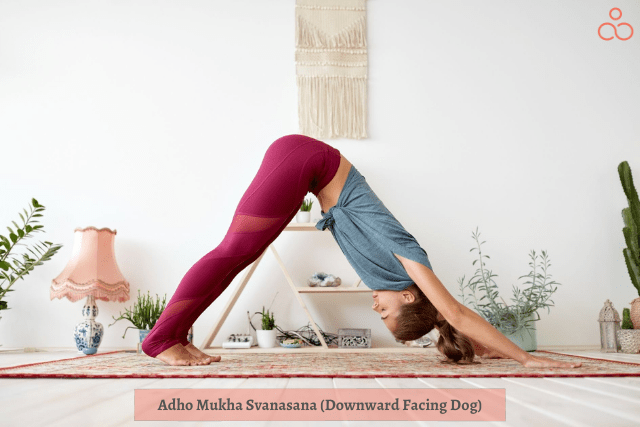
Warrior II (Virabhadrasana II) – This standing pose builds muscle in the legs, ankles, and feet while improving balance and stability. It also helps martial artists stay focused and concentrated.
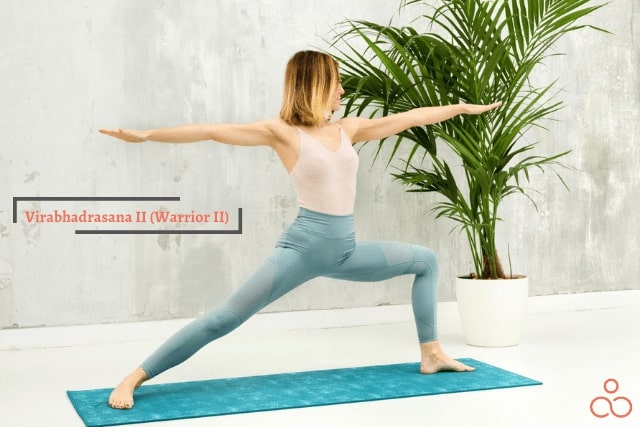
Triangle Pose (Trikonasana) – This pose boosts flexibility, particularly in the hips and groyne, while strengthening the legs and core. It helps martial artists attain the correct leg positions for stances and kicks.
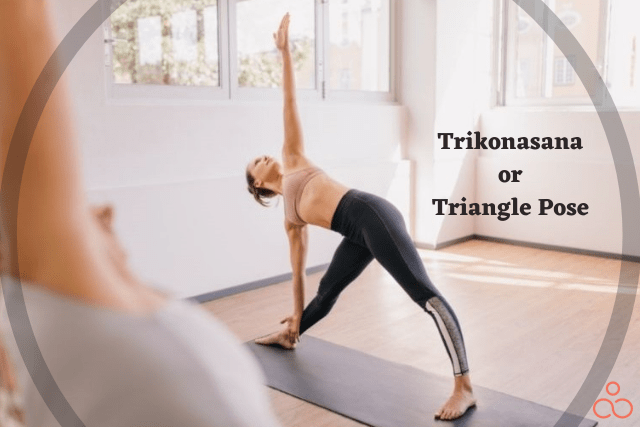
Tree Pose (Vrksasana) – In Tree pose, it is required to balance on one leg as it strengthens the legs, ankles, and feet while improving focus and concentration – both needed in martial arts.
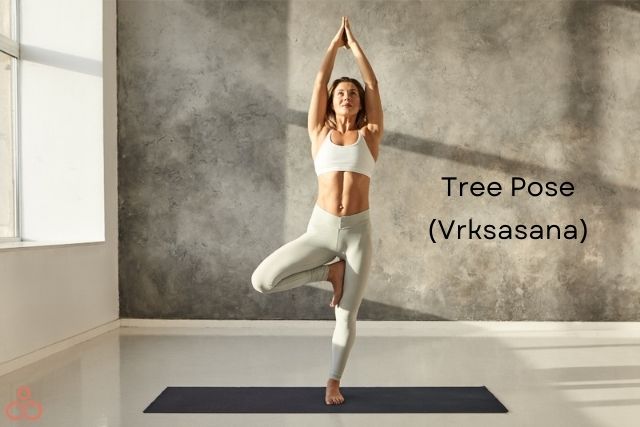
Bridge Pose (Setu Bandha Sarvangasana) – This backbend increases spine, hip flexor, glute strength, and flexibility in the shoulders and chest. It helps martial artists maintain a firm stance during movements and techniques.
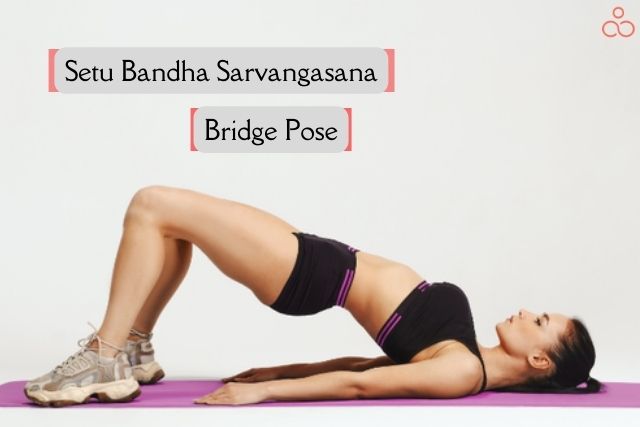
Pigeon Pose (Eka Pada Rajakapotasana) – This hip opener stretches the thighs, hip flexors, and groyne, which is essential for achieving higher kicks and better leg positioning.
Plank Pose (Phalakasana) – This core-strengthening pose increases overall body strength, stability, and balance, helping martial artists perform techniques with more power and control.
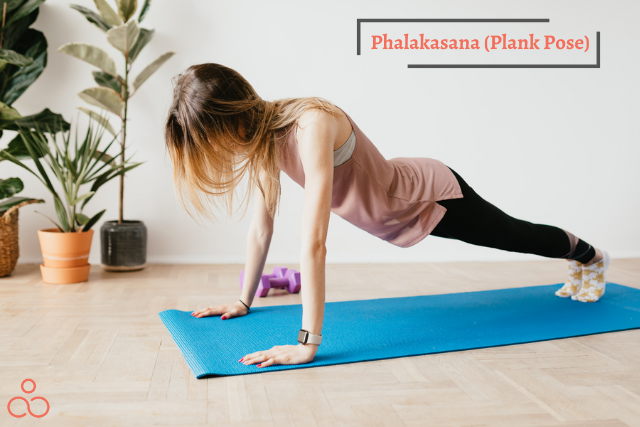
Cat-Cow Pose (Marjaryasana–Bitilasana) – These gentle, flowing poses help warm up the spine and improve flexibility in the back and neck. They support proper posture and body alignment in martial arts movements.
Garland Pose (Malasana) – This deep squat pose opens the hips, stretches the groin, and strengthens the legs and ankles. It supports martial artists in maintaining a solid base for various techniques.
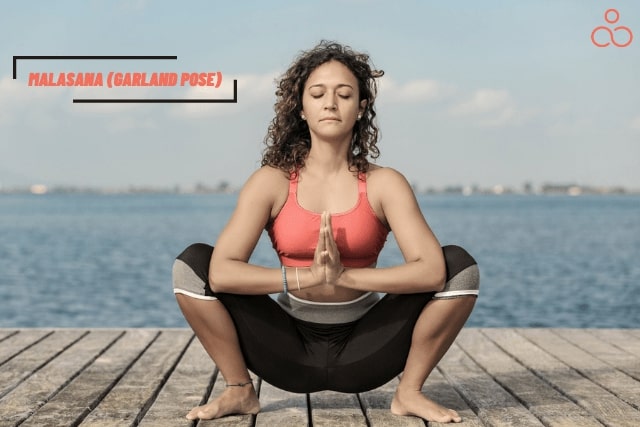
Eagle Pose (Garudasana)– Eagle pose promotes balance and stability while strengthening the ankles, legs, and shoulders, improving multidirectional control in martial arts.
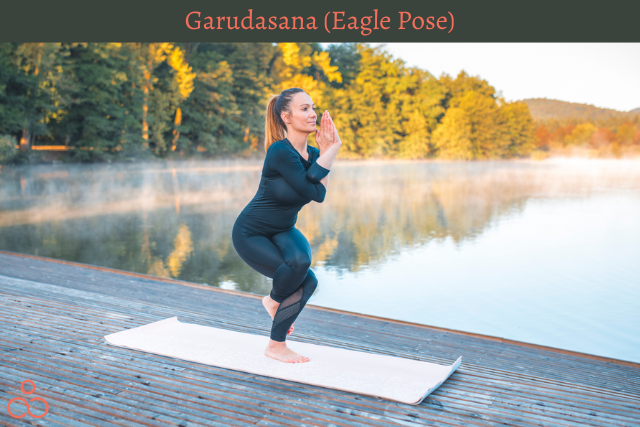
Best martial art moves for Yoga
Front Kick (Mae Geri) – This move strengthens the legs while improving balance and coordination, making it a perfect addition to your yoga practice.
Side Kick (Yoko Geri) – This powerful kicking technique helps you develop hip mobility and leg strength, complementing yoga postures that require flexibility and stability.
Roundhouse Kick (Mawashi Geri) – This dynamic move boosts your agility and core strength, which can enhance any yoga practice.
Straight Punch (Choku Zuki) – This simple yet effective technique builds upper body and core strength, bolstering the power needed for yoga inversions and arm balances.
Palm Heel Strike (Shotei Uchi) – This move strengthens your wrist and forearm while encouraging proper alignment, aiding in various yoga poses.
Elbow Strike (Empi Uchi) – This technique helps develop shoulder stability and improves your balance, both of which are important for a solid yoga practice.
Knee Strike (Hiza Geri) – This move builds lower body strength and improves hip flexibility – essential for many Yoga poses.
Spinning Back Kick (Ushiro Mawashi Geri) – This powerful kick enhances balance, coordination, and core strength, making it an excellent addition to your yoga practice.
Flowing Hand Movement (Tai Sabaki) – This drill develops fluidity, body awareness, and control, which translate well to yoga movements.
Standing on One Leg (Tsuru Ashi Dachi) – This martial arts stance improves balance, strength, and focus, similar to one-legged Yoga poses like Tree Pose (Vrksasana) and Extended Hand-to-Big-Toe Pose (Utthita Hasta Padangusthasana).
Wow facts
- There are more than 100 different types of Yoga practised worldwide.
- Martial arts originated in different parts of the world, with the earliest records dating back to ancient Egypt and China.
- Some martial arts are practised for self-defence, while others focus on cultivating inner peace and self-improvement.
- Tai chi, a martial art, also emphasises slow, deliberate movements and deep breathing, similar to Yoga.
- Yoga can increase flexibility, improve balance, and build strength, while martial arts can boost agility, stamina, and overall physical fitness.
- Bruce Lee, a famous martial artist, was known for incorporating elements of Yoga into his training routine.
- Yoga and martial arts both promote mental clarity, discipline, and self-awareness.
- In Brazil, a combined practice called “Yogitsu” blends elements of jiu-jitsu with Yoga.
FAQs
Is Yoga good for martial arts?
Yes, Yoga can be beneficial for martial artists as it helps improve flexibility, balance, focus, and overall body awareness. These factors can contribute to better performance and injury prevention in martial arts.
Is martial arts good for Yoga?
Martial arts and Yoga both focus on physical fitness, mindfulness, and proper breathing techniques. While they are different practices, martial arts can complement Yoga by improving strength, flexibility, and mental focus. So, martial arts can be suitable for individuals practising Yoga, as they can enhance overall performance and well-being.
Why is Yoga not a martial art?
Yoga is not considered a martial art because it primarily focuses on self-awareness, mindfulness, relaxation, and physical fitness, rather than combat techniques, self-defence, or competition. While discipline and mental focus are shared values between Yoga and martial arts, their objectives and practices are fundamentally different. Yoga emphasises calmness, flexibility, and balance, while martial arts involve training for self-protection and combat situations.
Can you combine Yoga and martial arts to get the maximum benefits?
Yes, combining Yoga and martial arts can provide maximum benefits, as Yoga focuses on flexibility, balance, and mindfulness. In contrast, martial arts develop strength, agility, and self-defence skills. Integrating both practices can achieve a comprehensive workout and enhance overall physical and mental well-being.
Do martial arts have any drawbacks?
Yes, martial arts can have some drawbacks, such as the risk of injuries, potential overemphasis on competition or perfectionism, and the possibility of developing an aggressive attitude. However, these drawbacks can be minimised through proper guidance, training, and focus on personal growth.
Can martial arts be a substitute for Yoga?
While both martial arts and Yoga provide numerous physical and mental health benefits, they have distinct goals and practice styles. Martial arts focus on self-defence, discipline, and physical strength, whereas Yoga prioritises flexibility, balance, and mindfulness. Though they share some similarities, they cannot be considered direct substitutes for each other. Each has unique aspects; an individual’s preference may depend on personal goals and fitness levels.
What does it mean when someone says “Yoga is a martial art you do by yourself”?
Yoga, often considered a physical, mental, and spiritual well-being practice, can also be regarded as a martial art you do by yourself. This perspective emphasises the fact that Yoga involves challenging poses, breath control, and mindfulness that require discipline, focus, and commitment, much like traditional martial arts. The critical difference is that Yoga focuses on self-improvement and self-awareness rather than combat or self-defence. By practising Yoga, individuals develop strength, flexibility, balance, and mental clarity, which are essential components embraced in the philosophy of martial arts.
“Yoga is a martial art against yourself” – Is it a myth or fact?
In certain aspects, we can consider the point, “Yoga is a martial art you do against yourself” due to its focus on self-discipline, self-awareness, and the constant improvement of physical and mental capabilities. Although it does not involve combat against an opponent, it encourages individuals to challenge themselves by mastering their body movements, breathing techniques, and mental focus. The discipline required to achieve progress in Yoga is similar to that of traditional martial arts, thereby making Yoga a unique type of martial art in that you “fight” against your own limitations and boundaries to achieve personal growth and balance.
So which is better, Yoga or a martial art?
Comparing the characteristics of both Yoga and martial arts, it can be concluded that Yoga is not a martial art. While both practices share some similarities, such as promoting self-discipline and physical fitness, Yoga primarily focuses on spiritual growth and inner peace. In contrast, martial arts revolve around self-defence, combat techniques, and competitive aspects. Determining whether yoga or martial arts is better depends on individual goals and preferences. Hence, the better choice between Yoga and martial arts will vary by individual needs and objectives.

